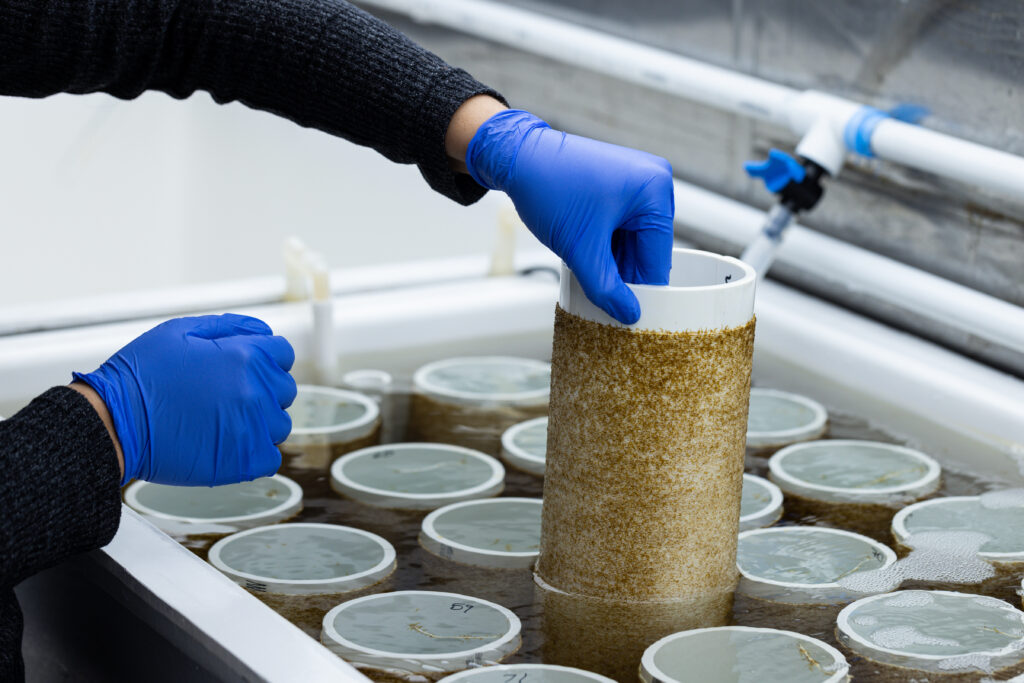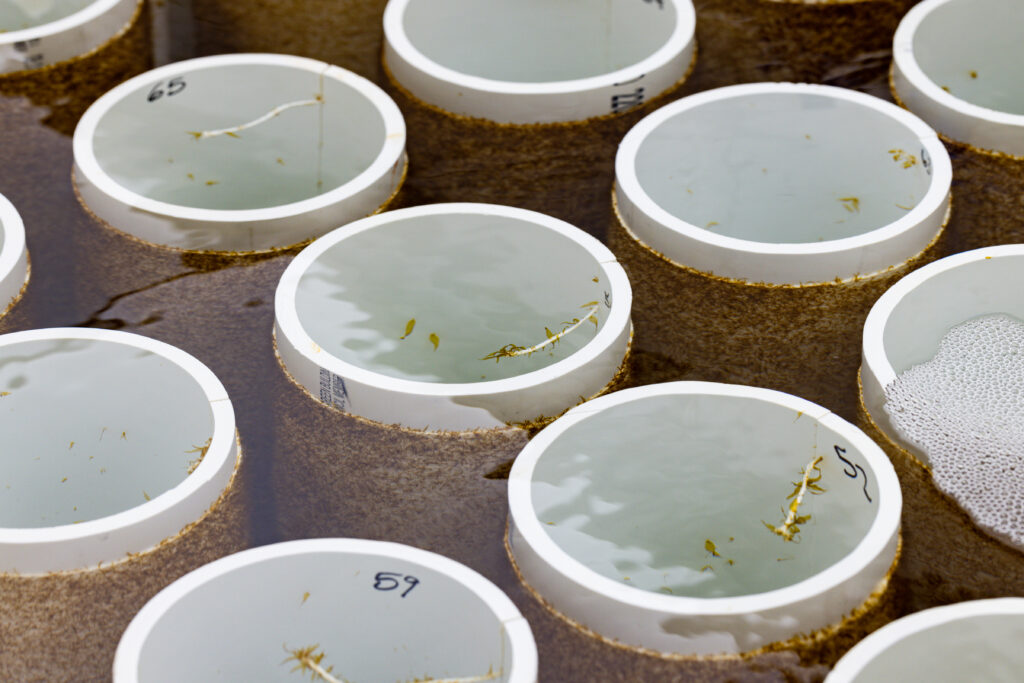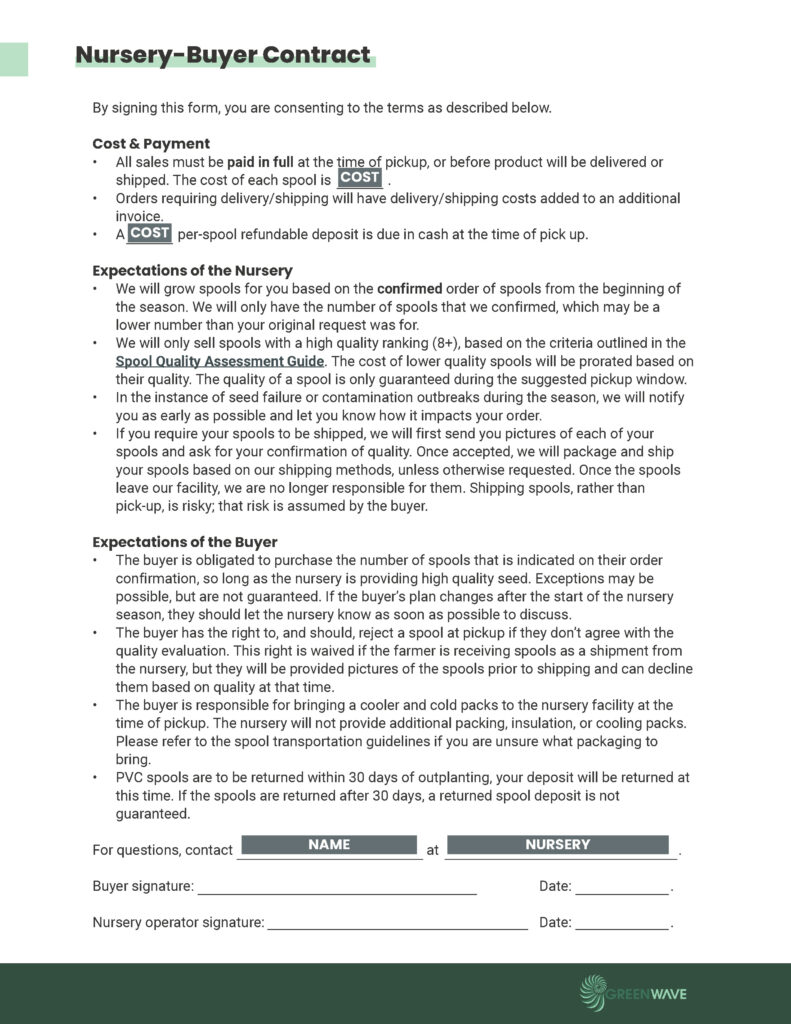On average, you should expect a 20% loss across your seed spools. Be sure to start with enough spools to account for some failure.
Back to: Preseason Preparation
At least one month in advance of the season, you’ll want to begin taking spool orders from farmers. This will give you time to determine your production goals for the season and prepare the requisite number of spools. Knowing how many people you’re growing for, and how many total linear feet of seed string you aim to produce, will also help you determine how much sorus tissue you’ll need to seed the whole hatchery.
When defining your hatchery target production numbers, it’s important to give yourself a buffer. You should expect that a portion of your spools will fail to produce high-quality seed. You can have spool failure for a number of reasons: improper seeding methods, contamination, failure of equipment, etc.


On average, you should expect a 20% loss across your hatchery. This number could be higher your first year when you’re still learning, and possibly lower in following years as you perfect your set-up. After you have taken all your spool orders, make sure you factor in this percent loss so you’ll be sure to have enough quality product to keep your farmers happy!
When you’re reaching out to farmers to take spool orders, it’s good practice to check in about their permits. Make sure that they are permitted to grow the kind of seaweed you plan to produce. For example, in Alaska, farmers need to source wild parent tissue 50 km from their farm sites. Some states on the East Coast might require that sorus tissue comes from within state waters. In case you missed it, review this lesson on Know the Regulations to learn more about the specific rules in your state.
It is important for you as a seller to set and communicate reasonable expectations to your buyers. One way to do this is through a contract. The contract does not need to be long or complicated, but it does need to clearly outline what both the nursery and farmer can expect from each other and where the nursery’s responsibility ends and the buyer’s responsibility begins. Send this contract to the farmers when you confirm their spool order. The contract should include points on pricing, timing, seed quality, a chain of custody of spools (i.e. who is responsible for the spools at what points), and what happens if your seed does not meet the farmer’s standards. We’ve included a sample contract below. Use this as a guide to draft your own contract that reflects the terms and best practices of your nursery operation.
Having a contract helps both parties align expectations. A farmer should refuse spools that do not meet quality standards, and a nursery should inform farmers before pickup if this might be the case. Determining the quality of a spool can be difficult because there are many factors at play such as total coverage, health/color of the sporophytes, size of the sporophytes, and presence of contamination. You can use the Seed Spool Quality Grading Guidelines chart below, along with the Contamination Identification for Spools chart to help you understand why each of the factors is important and determine the overall quality of spools.
